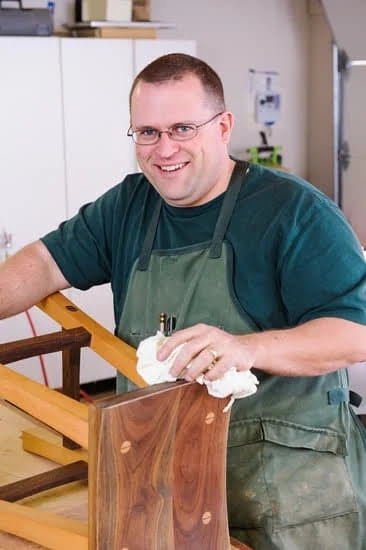Introduction
Woodworking is a great hobby and activity that can help bring out your child’s creativity in building unique projects. Woodworking is also a fun way to spend time with family, or spend quality time teaching children a hands-on craft that they can use throughout their life. Through woodworking, kids can learn new skills and practice patience. Kids will enjoy the satisfaction of watching their projects come to life from the raw lumber materials.
In this guide, we’ll provide simple projects for kids of all ages, from larger scale furniture pieces to small décor items for around the home. Before beginning these projects it’s best to prepare some safety equipment such as safety glasses and protective gloves, and make sure there is proper supervision from an experienced adult. Additionally, providing basic power tools like drills and sanders should be considered for more complex projects. Following these instructions will ensure a safe and enjoyable experience for any aspiring do-it-yourselfer! Let’s begin!
Prepping Your Toolbox
Before beginning any projects, it is crucial to equip your toolbox with all the necessary tools for woodworking with kids. Here are some essential items that should be in your toolbox:
* Hammer and nails: Depending on the project, having a hammer and nails on hand will be extremely useful. Make sure the hammer used is appropriate for children; larger, heavy-duty hammers are not recommended as they may put too much strain on their bodies.
* Safety glasses: Always put safety first when working with sharp objects! Equip your kids with safety glasses to protect their eyes while they’re sawing or drilling.
* Clamps: Clamps come in many different sizes and shapes and can help to hold two pieces of wood together while creating joints between them.
* Wood glue: A great alternative to using nails and screws, wood glue helps to bond pieces of wood securely without the need for added hardware.
* Sandpaper: Sandpaper comes in many types like coarse, medium, fine-grit sandpaper depending on how much you need to smooth down your piece of wood before staining or painting it.
* Chisels: Chisels are excellent tools for shaping wood especially if you want to create intricate designs. Be sure to opt for plastic or rubberized chisels as these will not cause injury or splinters like a metal chisel might.
In addition to these tools, you may also find yourself needing pliers, screwdrivers, saws (like hacksaw blades), markers or drill bits as well as a workbench or table dedicated completely to children’s woodworking projects. Teaching young ones basic safety practices such as wearing gloves when using power tools and never operating a motorized tool without adult supervision should also be part of their learning process. With these helpful tips and tools ranging from simple hammers and nails down to specialized chisels and sandpaper, your child can start creating carefully crafted pieces of wooden art today!
Materials and Supplies
To ensure safety and the best results, it’s important that you use the right type of wood when working on woodworking projects with kids. Softwoods such as pine, cedar, spruce, redwood and fir are excellent choices for beginner woodworking projects. They are lightweight, easy to cut and shape, and affordable. Hardwoods such as maple, oak, walnut and cherry will also do well for children’s woodworking projects but may involve more difficult shapes and joinery techniques. Plus harder woods tend to be less forgiving if mistakes are made during assembly or finishing stages. Additionally, hardwoods tend to be significantly more expensive than softwoods. To make sure the project goes smoothly for a beginner woodworker’s skill level go with soft woods that can easily be marked up and sanded again if needed.
Guidelines for Projects
Beginner woodworking projects for kids allow them to learn about the basics of working with wood and develop an appreciation for the craft. Kids have a natural dislike for tasks requiring patience and perseverance, but there are plenty of easy projects which can be done with just a few simple tools and materials. Beginner woodworking projects can create confidence by allowing children to see that they can make something useful out of a few planks.
When introducing woodworking to young learners it is important to ensure that the projects selected are safe and suitable for their age level. Beginner craftspeople should always work with adult supervision when learning to use power tools such as saws, hammers, and drills. For small children it is recommended to provide plastic parts such as hinges, screws, drawer pulls etc., so they won’t be exposed to any dangers posed by metal parts or fastening tools like screwdrivers or awls. Additionally, certain woods may contain toxins or irritants which could be harmful if inhaled or even touched in some cases. Therefore the type of wood used must be confirmed before working with it.
Some project ideas recommended for young beginners include birdhouses, planters, festive decorations like mini Christmas trees, shelves, stools/benches etc. Start by involving them in basic tasks such as sanding down raw boards until they’re smooth and glueing together two wooden pieces with assistance so as not to cause any unnecessary accidents. As time progresses these tasks will become easier for them and soon enough they’ll develop a deep passion for the hobby!
Project #1
Building a Birdhouse is a great beginner woodworking project for kids. It not only teaches children essential building skills, but it also introduces them to the finer details of nature—including the needs and requirements of local wildlife that may visit their new birdhouse. Starting with a few simple tools and a kit from the store or ideas from websites or books, children can learn how to select, cut, sand, glue, and assemble pieces of wood into their own birdhouse. For an extra special touch, they can paint and decorate the birdhouse with paints or other materials like beads, feathers, shells, and stones. By involving children in this kind of craftsmanship and creativity, they will feel proud and accomplished when they hang their finished birdhouse outside!
Project #2
Woodblock printing is a fun and creative beginner woodworking project for kids. It is a simple way to turn an ordinary piece of wood into a colorful artwork. All it takes is some basic supplies such as a block of wood, a linoleum cutter, several sheets of paper and print ink. The child can use the linoleum cutter to carve their design into the block of wood. Then, they can press inky rolled onto the block onto different sheets of paper to create multiple copies of their unique design! This activity will help children explore different ways creativity through art and also develop their skills in manual dexterity as they learn how to carefully use the tools required. Woodblock printing also teaches them simple physics principles behind the layers that are created when stacking pulpy sheets of paper and then taking aan impression from one surface to another, opening up endless possibilities for creative exploration!
Project #3
Project #3 is to build a home-built table. This project is great for those just starting out with woodworking, as it gives kids the opportunity to work with basic tools and materials such as wood paneling or plywood, nails and screws, measurements and saws. To build the table, first measure and cut the desired sized table top and legs. Once these pieces have been cut you can begin attaching them by nailing or screwing them together. Then finish the project by sanding down any rough edges and painting or staining the finished product – allowing your kid to express their creativity on this piece! Finally, once finished they can marvel in admiration at their first completed woodworking project!
Project #4
Kids can explore the technique of whittling woodworking pens to create a fun and unique pencil or pen set. To get started with this project you will need carving knives, chisels, and other sharp tools. You’ll also need a piece of soft wood. Start by drawing a design on the wooden block with a pencil and then carve out your design using the knives and chisels. Use short strokes and light pressure when carving to avoid over-slicing. Once you have finished the basic shape of your pen it’s time to refine the details. Take your time on this step by carefully cutting away at any imperfections in the shape until you achieve your desired look. Finally, sand down the carved area, oil it to bring out its natural grain, and buff it for shine before adding details such as paint or decorative beads. And voilà! You have created a beautiful wooden pen that is ready for use!
Safety Considerations for Kids Doing Woodworking
Safety is paramount when it comes to kids and woodworking. First, an adult should always be present in the workshop monitoring children, keeping a close eye on any power tools being used. Also, ear protection should be worn, as well as safety goggles. All sharp objects should be kept out of reach and hair should be tied back so it can’t get caught in saws or drills. Children shouldn’t wear loose clothing or jewelry which can also get caught in tools or around the project site. Lastly, good ventilation is essential for dust control when using potentially toxic finishes and paints. Having a proper workspace layout is also important for kids; allowing ample space for movement and clear paths to exit between equipment and materials will reduce the risk of injury significantly!
Tips and Tricks for Making Woodworking Fun and Engaging
When working on beginner woodworking projects for kids, it’s important to make sure the projects are fun and engaging for children of all ages. This will ensure their experience is enjoyable and give them a great sense of accomplishment when the project is finished. It is also important that woodworking tasks are chosen carefully to avoid developing negative experiences with the craft. Younger children should start with simpler projects like constructing birdhouses or frames using pre-cut wood pieces, while older children can take on more complex tasks such as cutting their own wood pieces and building furniture. With each project, make sure to provide helpful instruction on a level that kids can understand. It can also be beneficial to provide detailed plans and diagrams so visual learners can comprehend better. Safety must always remain a priority in any woodworking environment, so be sure children understand the importance of wearing safety glasses, listening to instructions, and operating tools safely. Providing guidance will help kids master each of these skills while still having fun during their crafting adventures!
Conclusion
Woodworking with kids can be a rewarding experience both for parents and children alike. It is important to provide guidance and to take safety precautions when working with wood. Start by selecting simple projects that involve minimal tools and materials. Establish clear work guidelines and set realistic expectations for the project’s outcome, as well as your own involvement and assistance. Invite your child to take ownership of the project from start to finish, giving them responsibility for every step, from explaining their design ideas to sanding parts to assembling components. Encourage dialogue throughout and be open-minded — you never know what amazing things might result! In the end, it’s all about encouraging exploration through creativity and building lasting memories along the way.

Hi everyone! I’m a woodworker and blogger, and this is my woodworking blog. In my blog, I share tips and tricks for woodworkers of all skill levels, as well as project ideas that you can try yourself.





